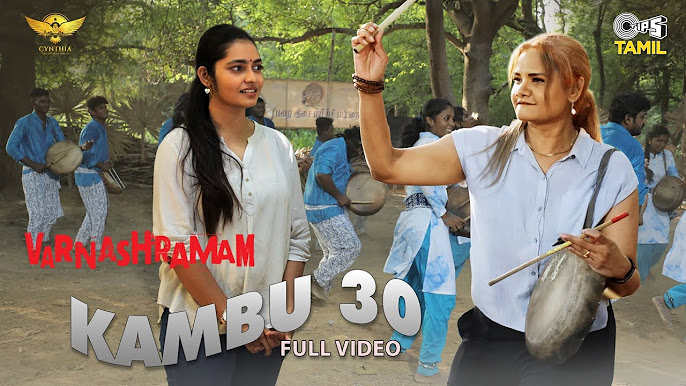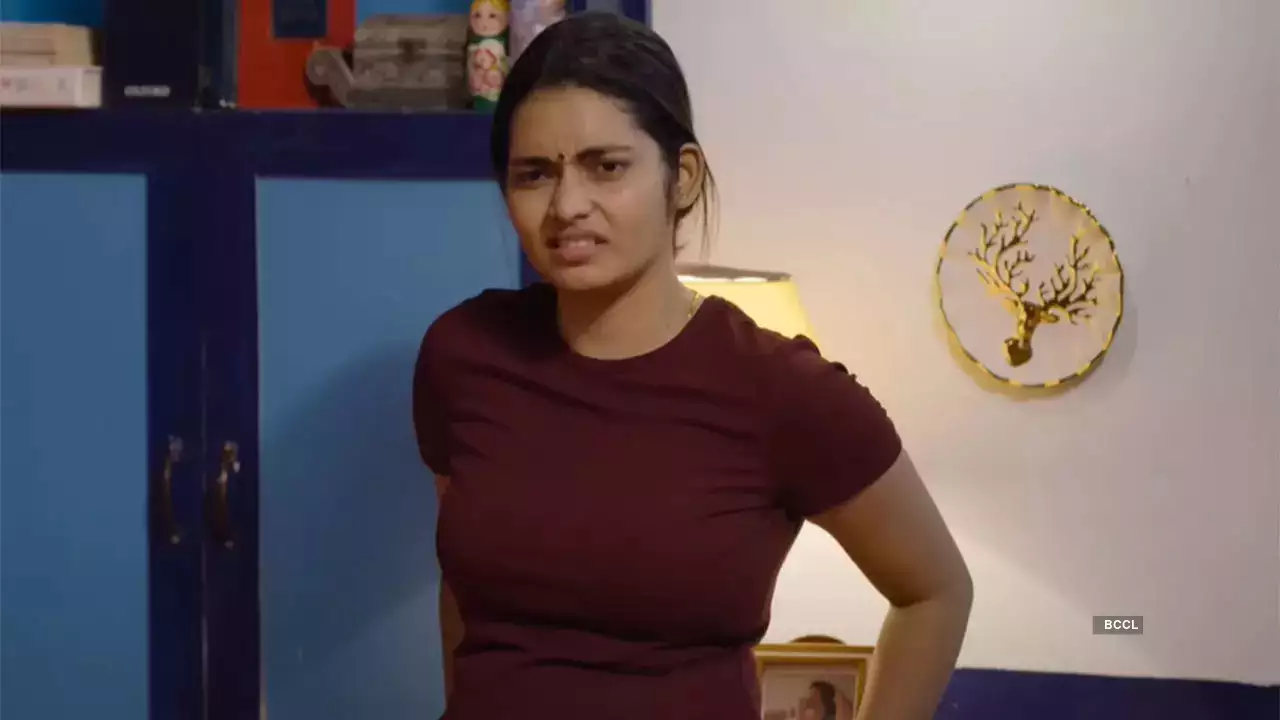
Introduction
Varnashramam is a Tamil-language drama film released in 2023, written and directed by V. Z. Dhorai, an emerging filmmaker known for his intriguing narratives that often explore societal themes and deep emotional conflicts. The title Varnashramam is derived from the ancient Hindu classification system that divides society into different classes or ‘Varna’ and ‘Ashrama’ (life stages). This film delves into the complexities of social structure, individual identity, and the intricate relationship between people and their roles within society. It addresses the age-old topic of caste, societal expectations, and personal transformation, making it a thought-provoking cinematic experience.
The film brings together a talented ensemble cast, including Vijay Sethupathi, Samantha Ruth Prabhu, Prakash Raj, and Rajkummar Rao in pivotal roles. With these seasoned actors, the film promised to deliver a powerful mix of drama, social commentary, and emotional depth. The film’s premise is built around the lives of individuals who struggle with societal pressures and the consequences of breaking free from long-established traditions.
Honest Review
Plot and Direction
The story of Varnashramam revolves around Ravi (played by Vijay Sethupathi), a middle-aged man who is caught in the rigid constraints of the social system that defines his every move. The movie explores his inner conflict, societal pressures, and quest for freedom. Ravi’s life becomes intertwined with the story of Aishwarya (played by Samantha Ruth Prabhu), a young woman who is determined to change the fate of her family by defying traditional customs. The film shows their journey of love, rebellion, and social defiance against a backdrop of deeply rooted caste-based hierarchies.
Director V. Z. Dhorai successfully combines an emotional and social narrative, offering an insightful commentary on how societal norms influence personal choices. The film doesn’t shy away from showing the gritty reality of the oppression people face due to caste discrimination and the complexities of breaking free from those constraints. Dhorai’s direction is strong, providing a sensitive portrayal of the psychological burden faced by individuals stuck in the cycle of caste and societal expectations. His ability to depict the emotional journey of the characters in a raw, unfiltered manner is one of the film’s strongest points.
However, the pacing of the film can be slow at times, especially in the second half, as it delves deeper into the personal dilemmas of the characters. Some viewers might feel that the film’s lengthy runtime detracts from its overall impact. Nevertheless, the film remains engaging due to its powerful performances and the compelling message it conveys.
Characterization and Performances

The film’s greatest strength lies in its character development. Each character is meticulously crafted to showcase their internal struggles, fears, and desires. Vijay Sethupathi delivers an outstanding performance as Ravi, a man struggling with his conscience and the pressures imposed by society. His portrayal of a man caught between tradition and personal freedom is deeply moving, and he manages to convey vulnerability, anger, and resolution with ease.
Samantha Ruth Prabhu plays Aishwarya, a woman caught between her personal ambitions and the weight of family responsibilities. She brings a sense of determination and vulnerability to her role, and her on-screen chemistry with Sethupathi is palpable. The evolution of Aishwarya from a naive dreamer to a woman fighting for her right to choose her destiny is beautifully portrayed.
Prakash Raj plays a pivotal supporting role as an influential elder figure in the community who symbolizes the rigid social structures. His performance is menacing and thought-provoking, as he represents the forces that want to maintain the status quo. Rajkummar Rao also has a significant role, adding depth to the film with his nuanced portrayal of an ally who understands the pain of social inequality but is still trapped in the system.
The performances across the board are stellar, and each actor brings authenticity to their respective roles, making the film’s emotional moments feel real and impactful. The chemistry between Sethupathi and Samantha is heartwarming, and their shared on-screen moments are the emotional backbone of the film.
Cinematography and Music
Cinematography by S. R. Sathish Kumar is one of the standout features of the film. The film captures the essence of rural India, from the dusty villages to the confined, suffocating spaces of the city, effectively contrasting the freedom and oppression experienced by the characters. The framing and use of natural light help convey the emotional tone of the story, allowing the audience to connect deeply with the characters’ struggles.
The film’s music, composed by G. V. Prakash Kumar, is another strong point. The score enhances the emotional gravity of the narrative, with the music often acting as a silent character, reflecting the inner turmoil and growth of the protagonists. The songs are evocative, and the background score adds to the intensity of the social conflicts that unfold on screen.
Read More: Idi Minnal Kadhal
IMDb Rating

As of now, Varnashramam has garnered a favorable reception on IMDb, holding a solid 7.8/10 rating. This is a testament to the film’s ability to resonate with audiences who appreciate films that explore complex social themes and deep emotional arcs. While some viewers have critiqued the pacing in the second half, the positive reviews for the performances, direction, and the overall theme have outweighed the drawbacks, making it a notable film in Tamil cinema.
Budget and Box Office Success
Varnashramam had a moderate production budget of ₹30 crore, which was allocated to casting, location choices, cinematography, and music. The film’s budget allowed the filmmakers to focus on a more intimate narrative that involved character-driven drama rather than grand set pieces or action sequences. The emphasis was on storytelling, performances, and the visual aesthetics of rural and urban landscapes.
At the box office, Varnashramam performed reasonably well, grossing approximately ₹60 crore globally. Although it didn’t reach blockbuster status, it managed to recover its investment and earn a healthy profit. The film’s success can be attributed to its strong storytelling, outstanding performances, and the audience’s appetite for thought-provoking films that tackle social issues. Its modest box-office run reflects its ability to capture the attention of viewers who appreciate cinema with depth and social relevance.
The film also performed well in the digital and satellite markets, as its themes resonated with a broader audience. Varnashramam’s message of societal change and personal freedom also found support from international audiences, especially in diaspora communities, where the themes of caste and social mobility have a universal appeal.
Conclusion
Varnashramam is an emotionally powerful and socially relevant film that delves into the complexities of caste, identity, and the choices that shape an individual’s life. With its strong performances, particularly from Vijay Sethupathi and Samantha Ruth Prabhu, the film delivers a poignant narrative that lingers long after the credits roll. Director V. Z. Dhorai succeeds in balancing deep social commentary with intimate character studies, making this film a standout in Tamil cinema.
While its pacing and runtime may feel slow for some, the emotional depth, authentic performances, and thought-provoking message make it a worthwhile watch for anyone interested in films that explore societal issues and human emotions. With its moderate box office success and a solid IMDb rating, Varnashramam has proved to be a meaningful contribution to Tamil cinema, offering audiences both entertainment and insight into the struggles of an oppressed society.
If you’re someone who enjoys films with strong social messages, rich character arcs, and performances that move you, Varnashramam is undoubtedly a must-watch. It’s a reflection of our times—where personal freedom and social responsibility collide, leaving us questioning where we fit into the ever-changing social fabric.